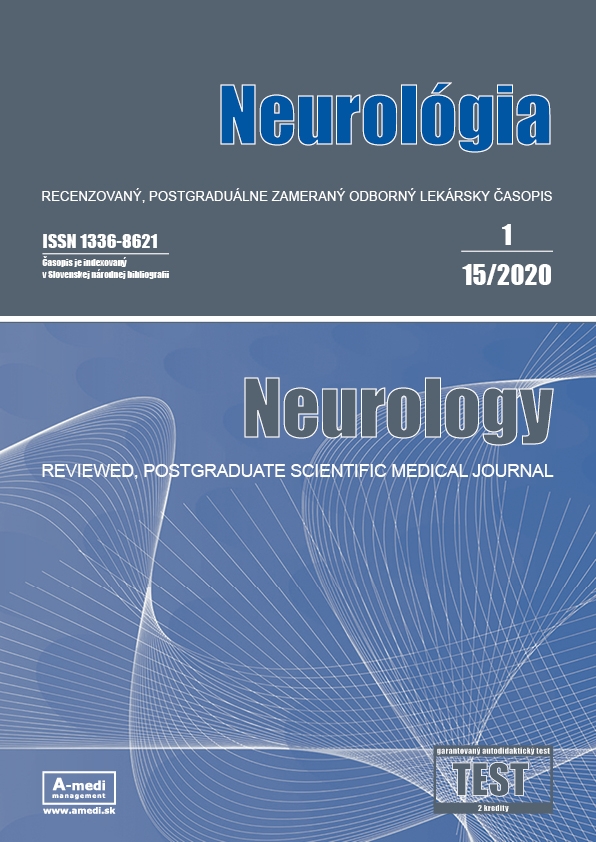Neurology
Reviewed, postgraduate scietific medical journal.
Period 3x per year
1336-8621
The journal is indexed in the Slovak National Bibliography, Bibliographiia Medica Slovaca (BMS) and listed to citation database CiBaMed. All articles are reviewed. The publisher does not bear any responsibility for data and opinions of particular authors of the articles or advertisements. The articles on grey pages are company promotions or non reviewed information, an author is responsible for the content. Any reproduction of the content is allowed only with direct consent of the editorial office.

